mount fuji japan
Mount Fuji Japan: Five Famous Artworks That Celebrate Its Beauty

Savannah Walker
Posted on June 30, 2025
Share:
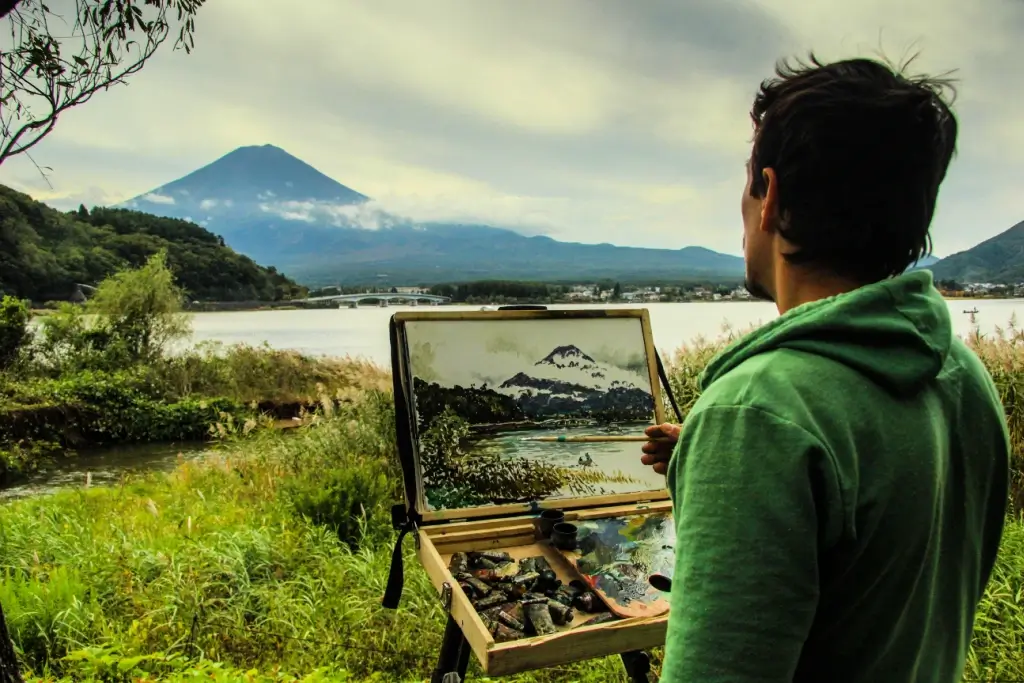
Mount Fuji in Japan is one of the most notable cultural symbols in the world. Rising gracefully to 3,776 meters (12,388 feet), it has inspired poets, pilgrims, and painters for centuries. Artists see Fuji not only as a mountain, but as a sacred form, unchanging yet always different depending on the light, season, or mood.
Throughout history, countless artworks have depicted this iconic peak, capturing its majesty in different styles and media. A few have become truly famous, standing the test of time and shaping how the world sees Mount Fuji. Here are five of the most celebrated works of art that feature Mount Fuji, each offering a unique window into the mountain’s beauty and meaning.
The Great Wave off Kanagawa by Katsushika Hokusai (1831)
Perhaps the most famous Japanese artwork of all time, The Great Wave off Kanagawa, is part of Hokusai’s woodblock print series Thirty-Six Views of Mount Fuji. At first glance, the viewer’s attention goes to the enormous wave crashing on three boats. But look closely; Mount Fuji appears small, still, and calm in the background.
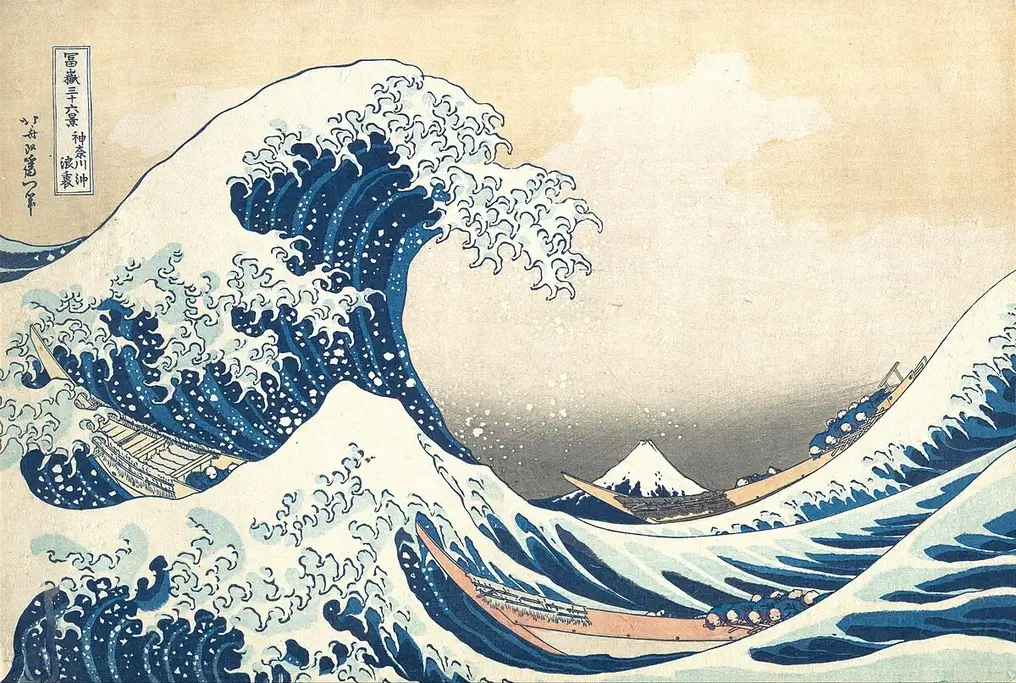
This contrast is part of the piece’s genius. While nature appears wild and dangerous in the form of the wave, Fuji remains unmoved, symbolizing strength and permanence. Hokusai made this print during the Edo period, when woodblock printing made art more widely available to the public. The image became iconic worldwide with its dramatic lines and sharp contrast between the wave and the mountain.
South Wind, Clear Sky by Hokusai (1831)
Another standout from Hokusai’s Thirty-Six Views of Mount Fuji is South Wind, Clear Sky, often called Red Fuji. This print shows the mountain in late summer, when the rising sun paints the red slopes under a clear blue sky. The image is bold, simple, and deeply symbolic.
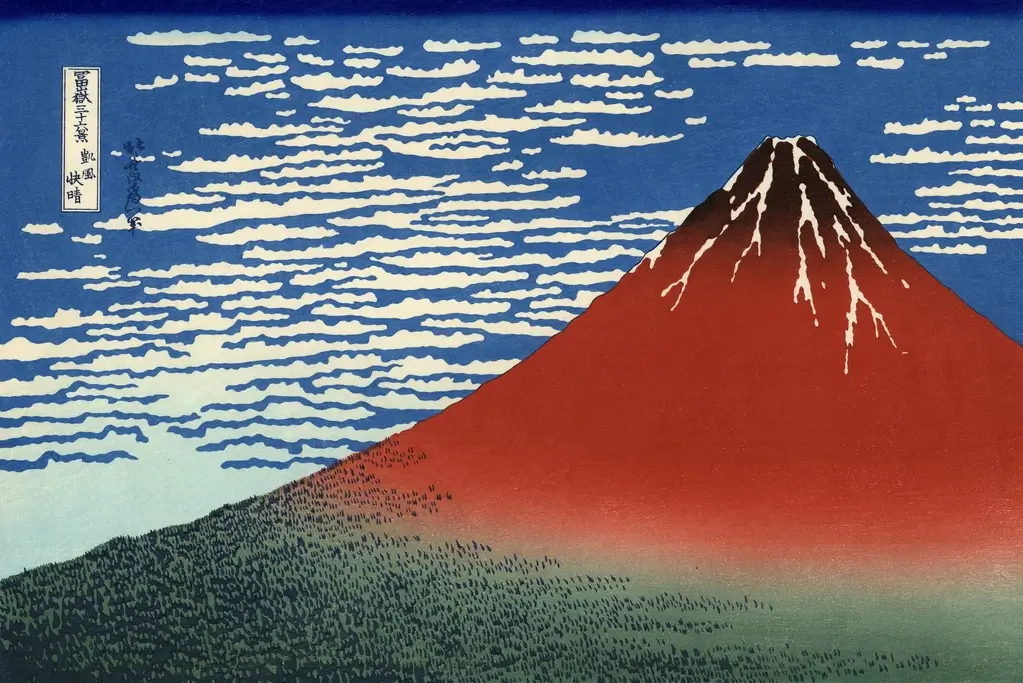
Unlike The Great Wave, this print focuses entirely on Mount Fuji, emphasizing its shape, color, and peaceful presence. Deep red and calm blue create a striking balance, while the slopes show fine texture through carefully carved lines. Red Fuji is seen as a symbol of good luck, and many people in Japan still display it in their homes or workplaces.
Are you looking for snacks that perfectly capture the spirit of Mount Fuji? Check out Sakuraco! Sakuraco delivers traditional Japanese snacks, teas, and sweets from local Japanese makers directly to your door so you can enjoy the latest treats directly from Japan!
Mount Fuji in Spring by Yokoyama Taikan (1900s)
Artists blended traditional themes with new techniques as Japan entered the modern era. Yokoyama Taikan was part of the Nihonga movement, which aimed to keep Japanese-style painting alive while also allowing for some Western influences. His piece, Mount Fuji in Spring, is a stunning example.

Painted using delicate ink washes and soft colors, the work shows Fuji in the distance surrounded by blooming cherry blossoms. The image is calm, dreamlike, and filled with gentle light. Unlike woodblock prints, which use bold outlines and flat colors, Taikan’s painting feels misty and layered, inviting quiet reflection. This version of Mount Fuji carries a deep sense of peace and nostalgia. It honors the mountain’s power and its emotional place in Japanese life.
Kajikazawa in Kai Province by Katsushika Hokusai (1830-1831)
Kajikazawa in Kai Province is another celebrated print from Hokusai’s Thirty-Six Views of Mount Fuji series. This artwork shows a fisherman standing on jagged rocks, casting his net into the fast-flowing river below, with Mount Fuji rising majestically in the background.
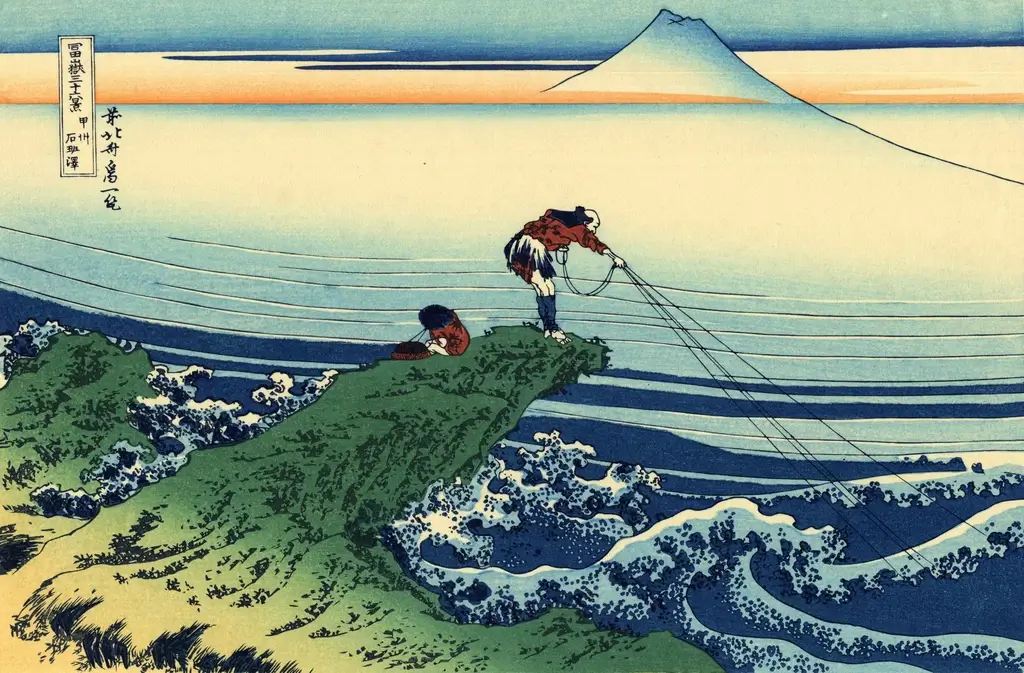
The image captures both human activity and nature’s grandeur. The fisherman’s dynamic pose and the swirling water convey movement and energy, while the serene and distant Mount Fuji provides a calm, stable contrast. The mountain’s presence in the background grounds the scene and reminds viewers of its constant watchfulness over everyday life.
Hokusai uses bold lines and vibrant blues to emphasize the power of the river and the fisherman’s strength. At the same time, the careful detail of Fuji’s snow-capped peak makes it the focal point. This print highlights the harmony between humans and nature, showing how Mount Fuji is woven into the lives and landscapes of Japan.
The Sea at Satta in Suruga Province by Utagawa Hiroshige (1858)
The Sea at Satta in Suruga Province is a stunning woodblock print from Hiroshige’s Famous Views of the Sixty-odd Provinces series. This artwork captures a dramatic coastal scene where rocky cliffs overlook the restless sea, with Mount Fuji rising majestically in the distance.
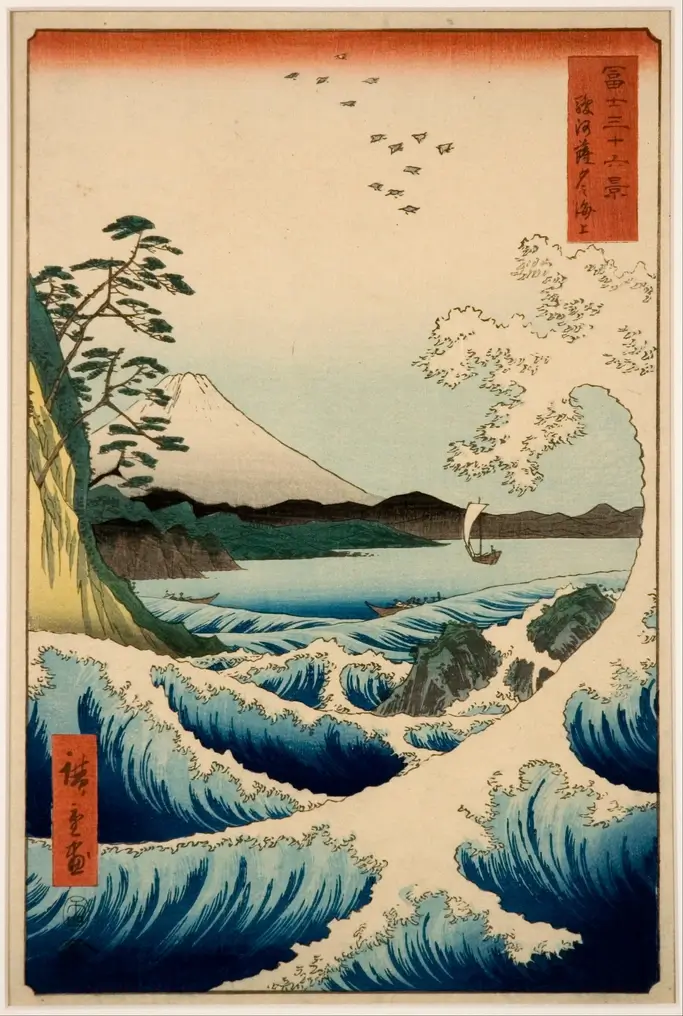
Hiroshige uses a strong diagonal composition, with waves crashing against the rugged coastline, guiding the viewer’s eye toward Fuji’s tranquil yet imposing silhouette. The print balances the dynamic energy of the sea and cliffs with the peaceful stillness of the mountain, creating a powerful contrast.
The colors are deep and vibrant, with the green cliffs and blue ocean complementing Mount Fuji’s soft, snow-capped peak. This piece emphasizes Fuji’s presence as a mountain and part of the broader natural environment—an ever-present guardian watching Japan’s varied landscapes.
Why does Mount Fuji appear in so many famous artworks from Japan?
Mount Fuji appears in many artworks because it represents more than just a mountain—it stands for beauty, strength, and the heart of Japan. Each artist sees it in their way. Some, like Hokusai, show it as a symbol of stillness against wild nature. Others, like Taikan, focus on its gentle spirit and seasonal charm. It has watched over Japan for centuries, inspiring people worldwide through art. Have you ever seen these famous artworks or know of other Fuji-inspired art? Let us know in the comments below!
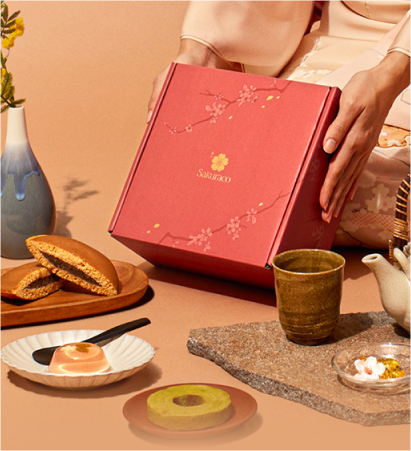
Discover authentic flavors with Sakuraco
Get Sakuraco 

Discover authentic flavors with Sakuraco
Get Sakuraco 
Related Articles
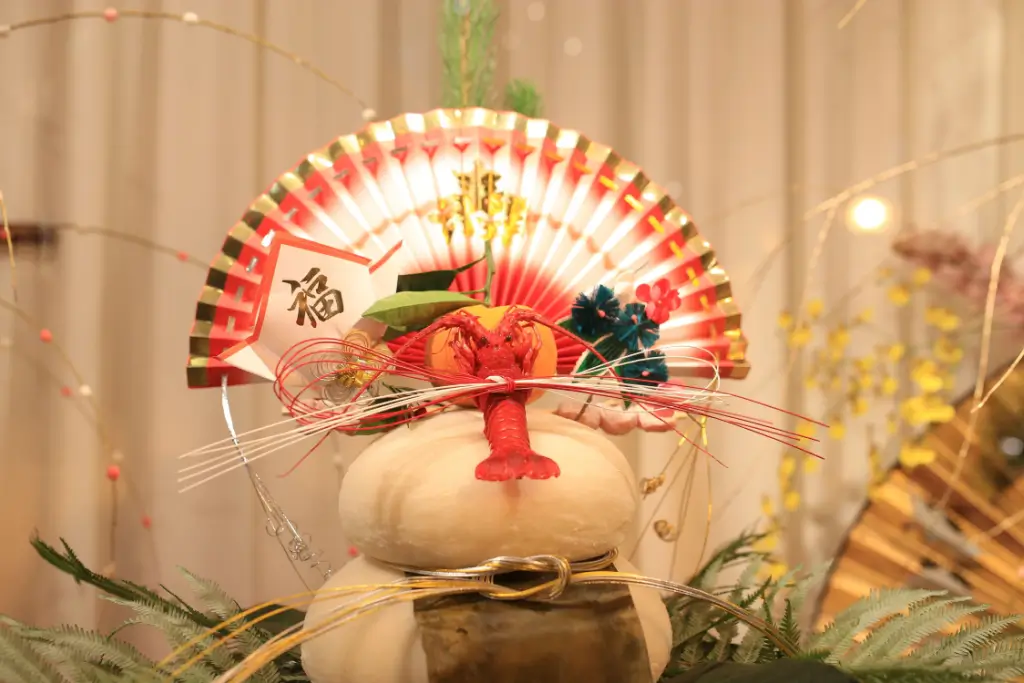
Toshigami and the New Year: How Shinto Welcomes a Sacred Visitor
In the Shinto tradition, Toshigami is the deity who arrives at the end of every year and remains through the New Year to bring blessings, a bountiful harvest, and good fortune. People in Japan honor Toshigami at the turn of the year with rituals, decorations, and special foods.
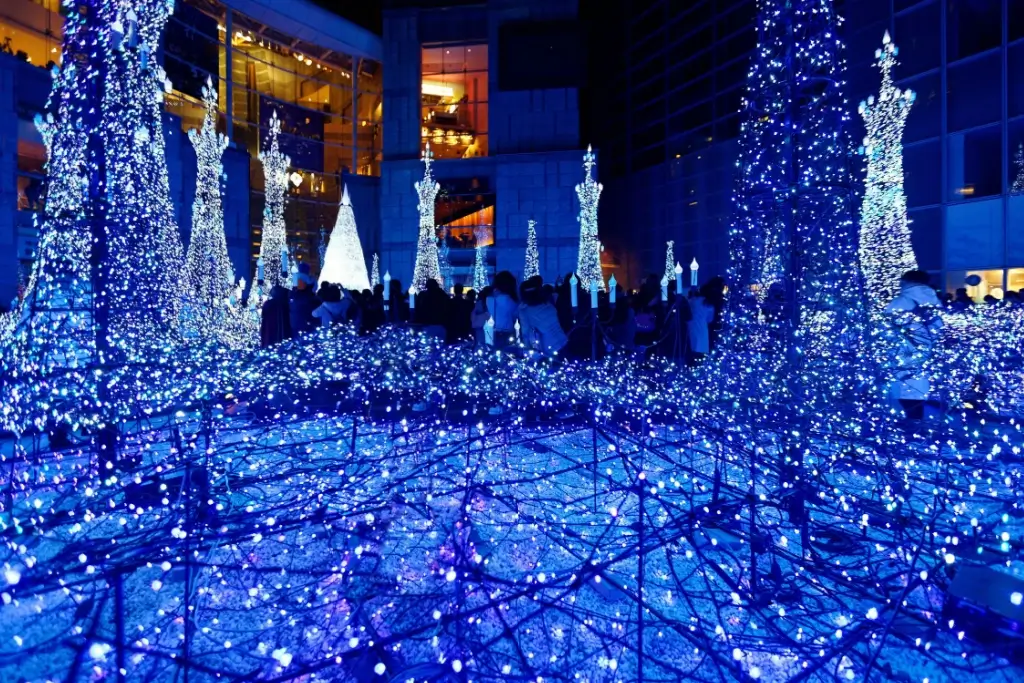
Japan in Winter: Why Are Illuminations Important?
Winter illuminations have become a tradition in Japan at the start of every Christmas season. Their sparkling brilliance chases away the cold of Japan in winter and encourages people to enjoy festive year-end activities. Let’s explore the origins and the amazing spots of winter illuminations in this beautiful country!

Behind the Camera with Rachel and Jun: Stories from Everyday Life in Japan
We had a lovely chat with Rachel and Jun about their story, from their early beginnings to how their videos continue to inspire people around the world. We’ve gathered and crafted their reflections into this special feature, so you can experience their story in a way that feels just like their videos: warm, genuine, and…
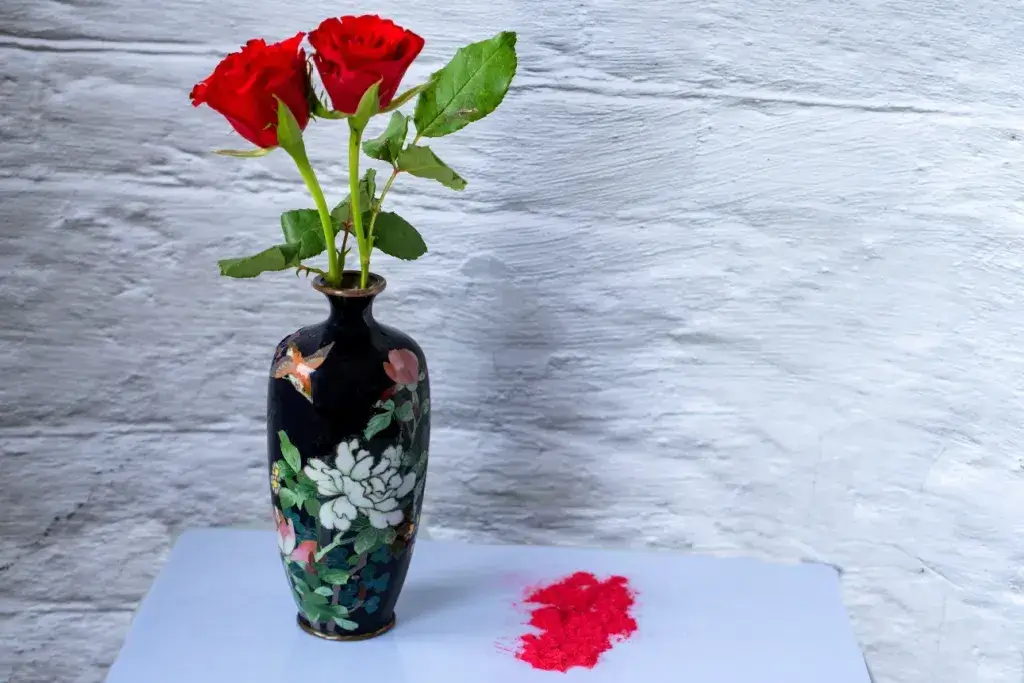
Japanese Ceramics: The Alluring Wares of Shippo Yaki
Imagine holding a small dish that glows as if sunlight is trapped inside it. This perfect example of Japanese ceramics resembles glass, with its colors deep and luminous, outlined with threads of silver. That’s the magic of shippo yaki.



